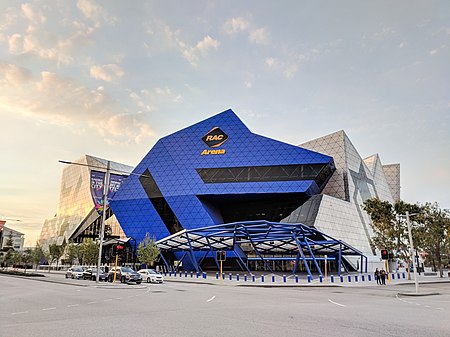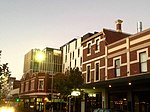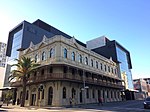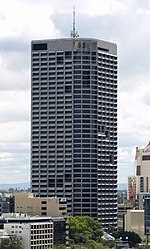Perth Arena
2012 establishments in AustraliaBasketball venues in AustraliaIndoor arenas in AustraliaLandmarks in Perth, Western AustraliaMusic venues completed in 2012 ... and 12 more
Music venues in Perth, Western AustraliaNational Basketball League (Australia) venuesNetball venues in Western AustraliaPerth City LinkPerth WildcatsRetractable-roof stadiums in AustraliaSports venues completed in 2012Sports venues in Perth, Western AustraliaTennis venues in AustraliaUse Australian English from January 2013Wellington Street, PerthWest Coast Fever

Perth Arena (known commercially as RAC Arena) is an entertainment and sporting arena in the city centre of Perth, Western Australia, used mostly for basketball matches. It is located on Wellington Street near the site of the former Perth Entertainment Centre, and was officially opened on 10 November 2012. Perth Arena is the first stage of the Perth City Link, a 13.5-hectare (33-acre) major urban renewal and redevelopment project which involves the sinking of the Fremantle railway line to link the Perth central business district directly with Northbridge.
Excerpt from the Wikipedia article Perth Arena (License: CC BY-SA 3.0, Authors, Images).Perth Arena
Wellington Street, Perth
Geographical coordinates (GPS) Address Website External links Nearby Places Show on map
Geographical coordinates (GPS)
| Latitude | Longitude |
|---|---|
| N -31.9483 ° | E 115.8519 ° |
Address
RAC Arena
Wellington Street 700
6000 Perth (Perth)
Western Australia, Australia
Open on Google Maps







